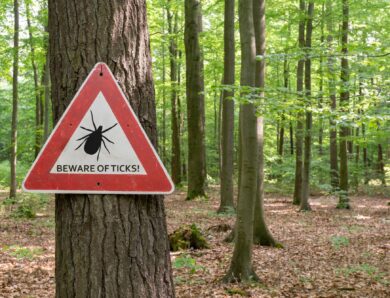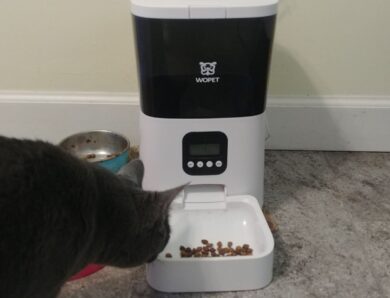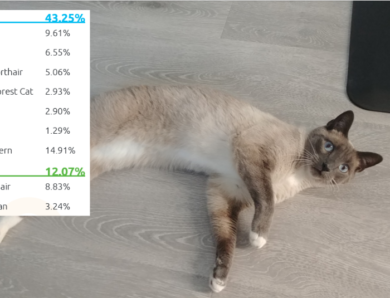
What To Do If You Find Kittens
Most people have a natural instinct to want to help anyone or anything we perceive as helpless. And what’s more helpless than a litter of kittens discovered under your bushes, in your backyard or in the shed.
But just because they look helpless doesn’t mean they don’t have help. They’ve got a mom, and even if you’re not seeing her right away, that doesn’t mean she’s not around.
Most of the time, the worst thing you can do is “rescue” them.
Here’s what you should do if you find kittens.
1. Wait
Finding kittens alone doesn’t mean they’ve been abandoned by their mom. She’s got to feed herself after all. Chances are she’ll be back, but it could be several hours.
Mom will most likely stay away if you’re hanging around so, if you can, keep an eye on the kittens through a window. If you’re going to stay outside, try to be at least 30 feet away. Any closer and there’s a good chance you’ll scare the mom away.
Keep in mind you could be waiting for hours. A better option might be to dust the area around the kittens with flour or baby powder (not on the kittens please). When the mom comes back, she’ll walk through it leaving cat tracks that will be easy to spot if you’re checking back every 20 or 30 minutes.
Mom should be back to feed the kittens within four to 10 hours, depending on the age of the kittens. Those under four weeks will need their mom within six hours. Older kittens can be left alone for closer to 10 hours.
2. Assess for Immediate Danger
The only time you shouldn’t wait for a mother cat to come back is if the kittens are in immediate danger.
If it’s pouring out, are they in a spot at risk for flooding? Has a fox been spotted in the area? Have they been discovered by dogs that might hurt them? Has one or more wandered out into a busy thoroughfare, either pedestrian or vehicle?
If they’re in danger, take a look and see if there’s a way to relocate them to a safer area, but not too far away from where mom left them. For instance, if they’re at risk of drowning, can you put them in a box at a higher elevation nearby? (Try to dry them off if you can; young kittens are at risk for hypothermia if they’re wet and it’s cold out.)
Are other animals are nearby? Look for a protected nook you can put them in. If they’ve wandering away from the nest, can you put them in a box so they can’t go anywhere?
To reiterate, only move or touch the kittens if they’re in immediate danger. Though uncommon, mother cats have been known to abandon kittens once they’ve been manhandled.
If you’re worried about their situation — or their health — check on them every 20 to 30 minutes, but keep each check-in short; you never know when mom will return.
3. Don’t Leave Food
Food is a sure-fire way to invite animals you don’t want around kittens. Mother cats purposely choose nest sites that are far from their food sources to ensure the safety of their young. Leaving food near the nest will only invite other cats or worse, racoons, dogs or foxes that could easily hurt or even kill the kittens.
If you want to make sure the mother cat has food, leave it some place far from where she left her kittens.
4. Leave Them with Mom
Kittens are best off with their mom for the first six to seven weeks of their life. If the mom is friendly and doesn’t mind your presence, consider trapping her and the kittens and bringing them indoors. You’ll need a safe, quiet area where the mom can feel safe.
Feral cats should be left outside, as being brought in can stress the mom out so much that she stops caring for her kittens. If you can, offer her outdoor accommodation. There are a number of shelters you can buy to put outside for feral cats. You can even build one from two Rubbermaid storage bins and Styrofoam.
Offering her shelter and food raises the chances mom will leave her kittens in place, but know that most stray and feral cats will move their kittens several times while they’re still young. While this means you miss getting them off the street while they’re small, they’re better off with mom until they’re weaned.
If mom and kittens disappear, ask your neighbors to take a look in their backyards. If you can keep up with where she’s nesting, you’ll have a better shot at nabbing the kittens once they’re started eating on their own.
5. Only Take Young Kittens as a Last Resort

If six or more hours pass (depending on the kittens’ age and condition), and the mother cat still hasn’t returned, you’ll need to decide what to do. (Alley Cat Allies has a great chart to help you figure out how old the kittens are.)
Before taking the kittens, decide if you’re going to care for them yourself.
Young kittens (under four to five weeks) need bottle feeding, which is a lot of work. You might want to reach out to local rescue groups to see if they have someone with bottle feeding experience available. (Unfortunately, during the height of kitten season, it’s often impossible to find an available fosterer with bottle feeding experience.) Another option is to reach out to veterinarians in your area to see if they have any vet techs interested in rescuing.
If you’re thinking of caring for the kittens yourself, be prepared to bottle feed every three hours or so. The Best Friends Animals Society has a great guide on how to bottle feed young kittens.
Kittens that are eating on their own are easier to care for, and can be taken from their mom once they’re older than six weeks old. At that point they mostly need you to spend a lot of time with them to get them used to people, though you’ll also need to take them to a vet to get checked out. Best Friends Animals Society has lots of good info on socializing rescued kittens.
If you’re not planning on keep the kittens yourself, you’ll want to hook up with a rescue organization who can help get them adopted.
Keeping those kittens? You’ll need a good name for them!
6. Take Care When Homing Kittens
Once the kittens have reached about eight weeks of age, they are ready to find their forever homes. If that’s not you, take care when searching for a new home for them. There are unscrupulous people out there who will take free kittens to use as dog fighting bait.
Unless you’re giving the kittens to someone you know well and trust, it is best to work with an established rescue organization. They have systems in place to ensure the kittens are only placed in a safe and loving home.
7. Get Mom Spayed
Don’t want to go through this same thing next year? The best way to ensure you’ll never find kittens in your backyard again is to get the mother cat fixed.
While some towns have official TNR (Trap-Neuter-Release) programs, most do not. Call to see if your town has a program or knows of one nearby.
If not, consider doing it yourself. Best Friends has an easy-to-follow guide, with video, on how to humanely trap a cat yourself.





